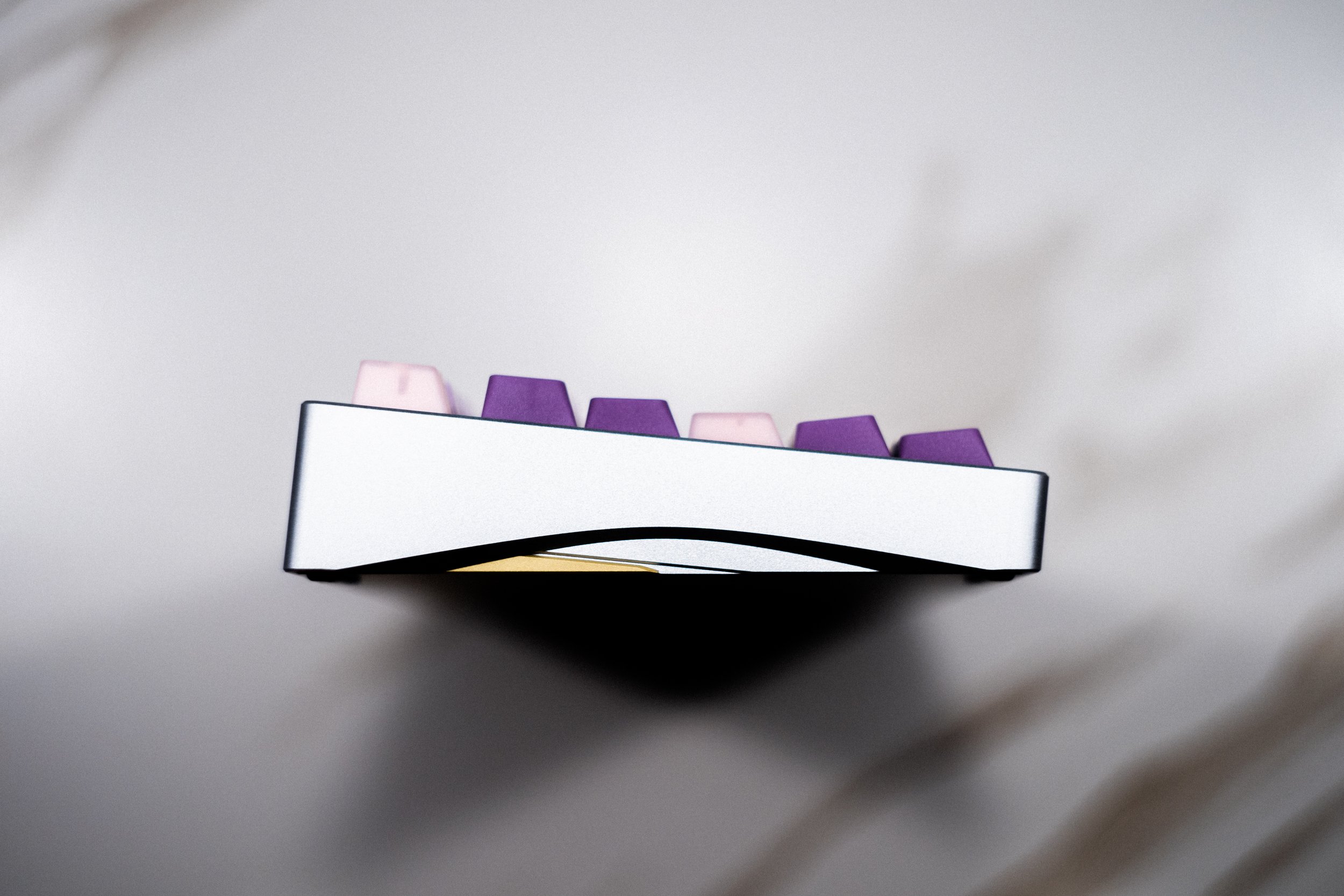
CLS-3//88
ORI Club
ORI Club
About ORI
ORI Club has its roots in Hanoi Vietnam and is known to make fantastic looking keyboards with great quality. The high prices of their boards make them a niche brand catering to the premium users in the community.
This CLS-3//88 is something that I’ve looked forward to building for the past few months. I’ve kept my eyes on it since pictures of the prototype came out and I have to say that I am not disappointed. Build quality is excellent. The finishing does not attract nasty fingerprints. There aren’t any blemishes nor leftover CNC marks either.
The case design gives the illusion that the keyboard is a unibody construction, when looked at from the top and bottom. I also appreciate how the gentle curve on the sides of this keyboard deviates from the standard rectangular look that most boards sport. This curvy design language is also apparent when viewing the board from the side, with a little tease of the brass weight showing out. And of course, the brass weight is also hefty and gives the entire keyboard a whole lot of substance. Feels awesome in the hands.
Funny story, I even dropped this guy on my vinyl floor and my heart just sank. To my surprise, there was no dent, no scratch anywhere. Seriously, nothing. My floor though, is another story. (Shh, my wife still doesn’t know about this.) Okay, maybe this isn’t so funny.
And might I say, the star of the show has got to be the hand laid leaf gold on the origami bird moniker. I thought this might have been the biggest marketing gimmick but I was so wrong. The fact that the gold was hand laid gives the surface of this moniker an imperfect look, breaking the monotony of an otherwise mechanically perfect keyboard where everything is well machined.
Splendid. I really cannot get over how clean an aesthetic this keyboard has.
Typing on this isn’t super soft, but is also something I hardly paid much attention to. The heft also makes it a pretty quiet keyboard, and changing the stems of the MX blacks out to PBT ones made the keyboard sound livelier. I will also be changing out the keycaps to something more contrasty and befitting of the sliver canvas. As much as GMK Symbiote looks cool, the light pastel tone doesn’t quite fit this keyboard.
My only gripe about this keyboard is that I wished that it was just that bit easier to assemble. This keyboard is a three-piece design – the top case, bottom case and the brass weight. A total of 14 screws have to be touched before the PCB assembly can be accessed. First, the brass weight has to be removed before I can dismantle the top and bottom cases. And the brass weight acts as a separator that divides the daughterboard compartment from the main PCB assembly. Not to mention, the cutout for the wiring of the daughterboard is pretty tight, giving little wiggle room so the chances of pinching the wire when laying everything together is pretty high. I had to check repeatedly, no less than 5 times even, to ensure that the wire is not pinched between the metallic layers. Knowing that I have to go through this process again just to change out switches is very deterring.
Did I mention that no tools are included in this kit? Yep. Seems like an oversight or poor assumption that every builder would have the right tools to properly disassemble or assemble this keyboard. Or maybe my kit just lacked a set. Either way, could be done better.
Conclusion
Honestly, aside from inconveniences during building, there isn’t anything really, to complain about. The quality of the keyboard is excellent and the aesthetics is up my alley. I’m just nitpicking at things to say at this point. And experienced builders would actually appreciate the slight challenge this build poses. Just because.
I absolutely love this keyboard. Love it.














